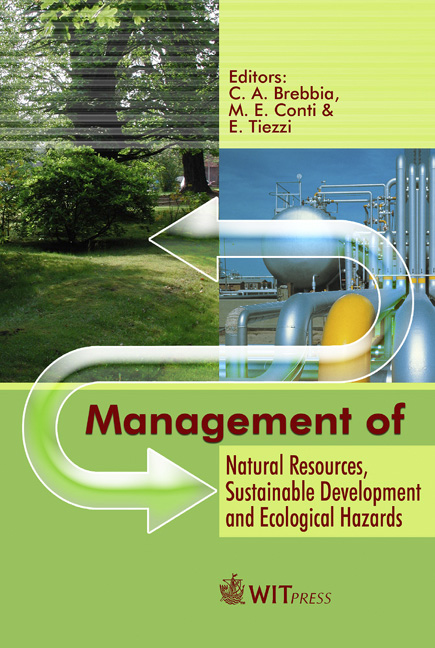Monitoring Land Use And Land Cover Changes In Turkmenistan Using Remote Sensing
Price
Free (open access)
Transaction
Volume
99
Pages
9
Published
2006
Size
1,587 kb
Paper DOI
10.2495/RAV060461
Copyright
WIT Press
Author(s)
L. Orlovsky, S. Kaplan, N. Orlovsky, D. Blumberg & E. Mamedov
Abstract
In Turkmenistan the most prominent cause for desertification is inappropriate land use practices. The natural arid pastures have limited carrying capacity and any changes of the fragile balance can lead to the destruction of this valuable resource. One of the most appropriate tools for monitoring these processes is change detection through remote sensing imagery. Accurate monitoring of changes on the Earth's surface is important to understand the relationship between man and nature and to provide decision makers with relevant information. The information on vegetation change is the most important of these relationships. Vegetation cover is also a useful indicator of the magnitude of land degradation that is easily assessed by multispectral remote sensing. The reduced vegetation cover causes an increase in albedo, which can also be monitored by remote sensing. The combination of these two parameters can give us a better map of the pasture status and its degradation rate. Landsat TM and ETM+ images were processed to maps of land use/land cover changes in northern Turkmenistan. The data were further processed in GIS and revealed the shrinking and the degradation of the pasture area. From the 1970s a total of ~4000km2 of pasture were transformed into agricultural land, increasing the grazing pressure in the remaining areas. By applying advanced techniques for image based end-member retrieval and spectral mixture analysis a sub-pixel fraction was obtained for each end-member. The fractions of soil and vegetation emphasize the most degraded/rehabilitated sectors of the study area. Our results indicate the reduction of vegetation in specific areas while most of the desert experiences an increase in the vegetation cover. Our current study focuses on combining the spectral mixture analysis products with other degradation criteria such as change detection using albedo and vegetation indices to produce a more detailed assessment and understanding of the processes leading to these changes. Keywords: Central Asia, pastures, irrigation, secondary salinization.
Keywords
Central Asia, pastures, irrigation, secondary salinization.





